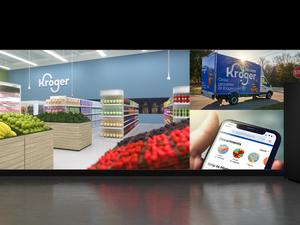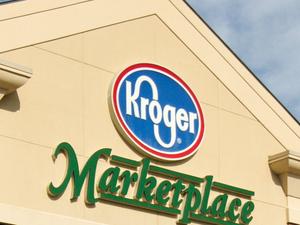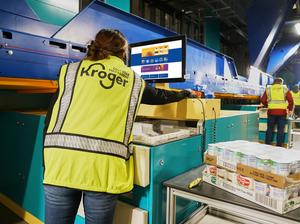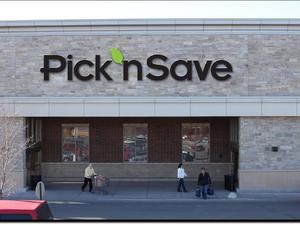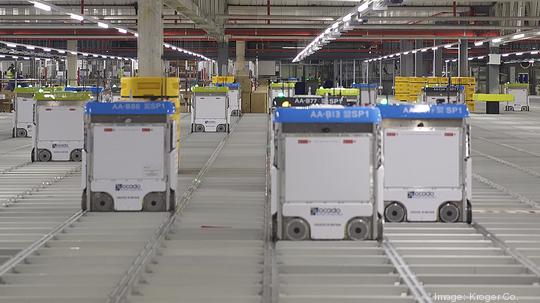
Kroger Co.'s recent expansion of new customer fulfillment centers in markets where it doesn’t have stores is opening up huge swaths of the country where it doesn’t have stores.
To be exact, downtown Cincinnati-based Kroger (NYSE: KR), the nation’s largest operator of traditional supermarkets including Pick 'n Save and Metro Market in the Milwaukee area, will have access to 40 million customers this year that it didn’t previously reach, Yael Cosset, Kroger’s chief information officer, told investors and analysts earlier this month. He spoke at a business update the company provided at its Ocado automated distribution facility near Orlando.
The setting was fitting, because those Ocado facilities have enabled Kroger to reach massive amounts of customers without building stores. Instead, it has teamed with London, England-based online grocery delivery company Ocado to open those facilities, which will include a facility in Pleasant Prairie expected to open this year.
Kroger announced facilities in Austin and San Antonio, Texas, as well as Birmingham, Alabama, at its business update presentation. Those will come online this year. The move closely followed Kroger’s announcement to open automated facilities in Cleveland and Oklahoma City.
“These new geographies alone are unlocking access to over 40 million new customers in 2022,” Cosset said. “And this doesn't include the Northeast and Southern California markets that we have announced, which we will launch later.”
Cosset said about half of Kroger’s growth will come from new markets, with the rest generated by additional sales and adding customers in its existing markets.
The Ocado facilities equate to about 20 stores.
“That is a lot of demand in e-commerce for us to go after,” Cosset said.
Kroger opened its first Ocado-powered facility in Monroe, just north of Cincinnati, a year ago. That $55 million facility covers 350,000 square feet.
Digital sales are becoming seamless, both to customers but also to Kroger. Kroger CEO Rodney McMullen said it’s on track for those sales to be as profitable as in-store sales, as Kroger builds up its digital capabilities with additional investment.
“If you look out four years or so, the margins in that business won't be any different than the margins in the supermarket business,” McMullen said of digital sales.
“What we are finding is the more engaged somebody becomes in our digital ecosystem or our whole ecosystem, we get a higher share of their total household spend,” McMullen said. “And you get an accelerating effect.”
As Kroger chief merchant and marketing officer Stuart Aitken put it: “We can offer that increasing share of wallet and increasing retention. Now we've got true customer lens on the entire ecosystem and we love what we're seeing.”
It all adds up to Kroger remaining on pace to achieve its goals to double its digital sales and profitability by the end of 2023, Cosset said.
